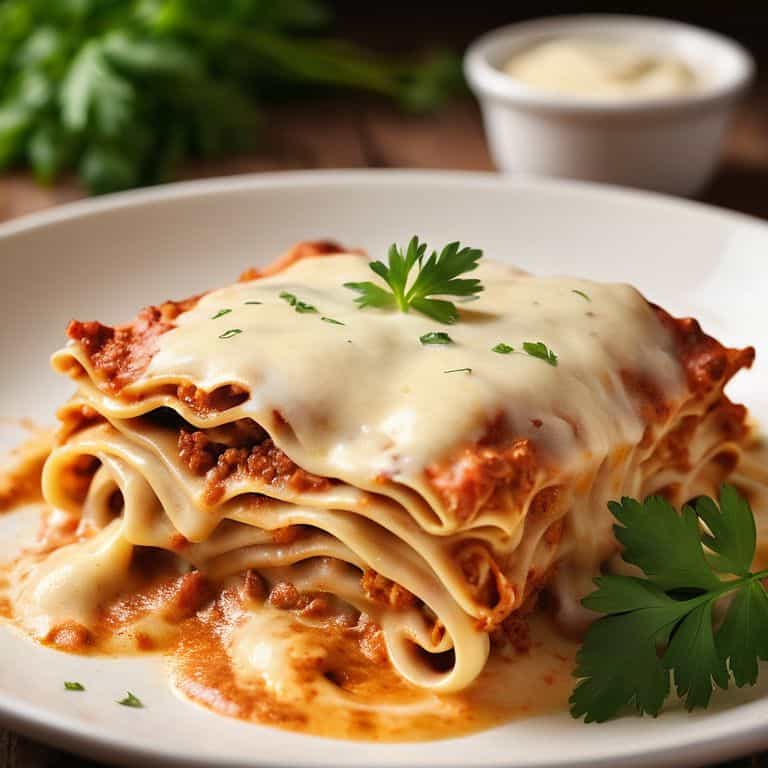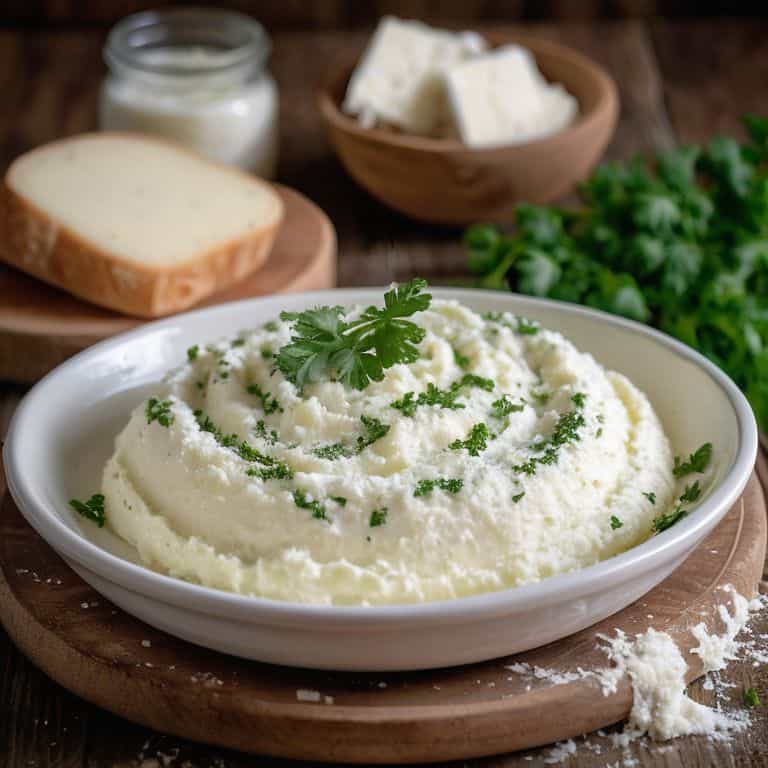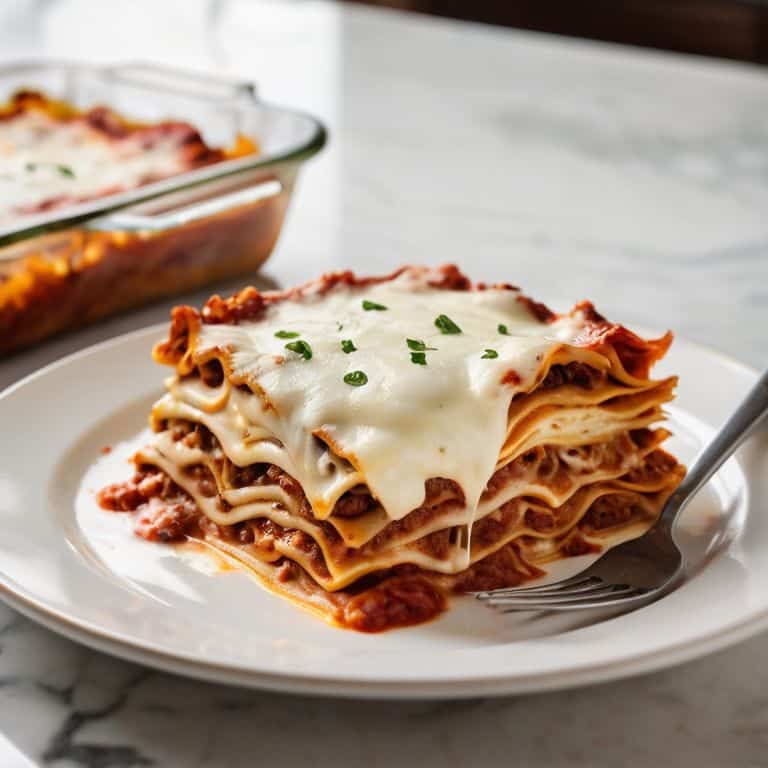The age-old debate: béchamel vs ricotta in lasagna. I’ve lost count of how many times I’ve stood in my kitchen, staring down at a block of creamy ricotta and a pot of simmering béchamel, wondering which one to choose. It’s a dilemma that has plagued home cooks for centuries, and one that I’m excited to dive into today. As someone who’s spent years perfecting their lasagna recipe, I can confidently say that the choice between these two cheeses is not one to be taken lightly.
So, what’s the best approach when it comes to béchamel vs ricotta in lasagna? In this article, I’ll be sharing my no-nonsense advice, garnered from years of experimentation and a passion for getting it just right. I’ll cut through the noise and give you the lowdown on which cheese works best, and why. My goal is to empower you with the knowledge to make a truly unforgettable lasagna, one that will leave your family and friends begging for more. So, let’s get started on this journey to lasagna perfection, and discover the secret to making a dish that’s truly greater than the sum of its parts.
Table of Contents
Béchamel in Lasagna

Béchamel is a white sauce made from a roux of butter and flour, milk, and seasonings, which serves as a rich and creamy component in lasagna recipes, particularly when combined with the main keyword, béchamel vs ricotta in lasagna. Its core mechanism involves slowly heating the mixture to avoid lumps, resulting in a smooth and velvety texture that coats the pasta perfectly. The main selling point of béchamel is its ability to add a depth of flavor and a luxurious feel to the dish.
I’ve found that using béchamel in my lasagna recipes elevates the entire dish, making it feel like a special occasion. When I take a bite, the creamy sauce coats my tongue, and I’m reminded of Sundays spent around my grandmother’s table. The comforting aroma of béchamel wafting from the oven is unmistakable, and it never fails to bring a sense of warmth and coziness to our gatherings. Whether I’m making it for a crowd or just a quiet night in, béchamel is the secret ingredient that makes my lasagna truly unforgettable.
Ricotta in Lasagna

Ricotta is a type of Italian cheese made from whey, characterized by its light and airy texture, often used in lasagna recipes as a replacement or complement to béchamel, especially in the context of béchamel vs ricotta in lasagna. Its core mechanism involves mixing the cheese with eggs, herbs, and spices to create a creamy and flavorful filling. The main selling point of ricotta is its ability to add a tangy freshness and a delicate texture to the dish.
In my experience, ricotta brings a welcome brightness to the richness of the lasagna, cutting through the heaviness of the pasta and sauce. When I’m cooking with ricotta, I love watching it melt and bind the flavors together, creating a harmonious balance of tastes and textures. The best part is that it’s incredibly versatile, allowing me to experiment with different flavors and ingredients, from classic parsley and basil to more adventurous combinations like spinach and feta.
Béchamel vs Ricotta in Lasagna: Head-to-Head Comparison
| Feature | Béchamel | Ricotta |
|---|---|---|
| Price | Moderate to High | Low to Moderate |
| Key Feature | Rich, creamy sauce | Light, airy texture |
| Best For | Traditional, meat-based lasagnas | Vegetarian, white lasagnas |
| Taste Profile | Mild, slightly nutty | Mild, slightly sweet |
| Preparation Time | Longer (requires making a roux) | Shorter (can be used straight away) |
| Calorie Count | Higher due to butter and flour | Lower compared to béchamel |
| Versatility | High (can be used in various dishes) | Medium (best in Italian dishes) |
Bchamel vs Ricotta in Lasagna

When it comes to lasagna perfection, the choice between béchamel and ricotta is a crucial one. The debate may seem trivial to some, but for those of us who live and breathe comfort food, it’s a decision that can make or break the dish.
In the head-to-head analysis, béchamel brings a rich and creamy element to the table, coating the pasta and filling with a velvety texture that’s hard to resist. On the other hand, ricotta provides a lighter and airier feel, allowing the other flavors in the lasagna to shine.
In terms of practical implications, béchamel requires more effort and time to prepare, while ricotta can be mixed and ready in no time. Considering the ease of preparation, ricotta seems to have a slight edge.
In conclusion, for the criterion of ease of use, I declare ricotta the winner in the béchamel vs ricotta in lasagna debate, as it offers a faster and more convenient option without sacrificing flavor.
My Top 3 Takeaways: Béchamel vs Ricotta in Lasagna
I always swear by the richness of béchamel for special occasions, but ricotta’s simplicity wins my heart for everyday meals
Whether you choose béchamel or ricotta, the key to a killer lasagna is using the freshest, highest-quality ingredients you can find – trust me, it makes all the difference
Don’t be afraid to experiment and find your own perfect balance between the two sauces: after all, the best lasagna is the one that’s made with love and tastes like home
The Heart of the Matter
For me, the choice between béchamel and ricotta in lasagna is about more than just flavor – it’s about the kind of comfort you’re craving: rich and velvety, or light and airy. It’s a decision that can make or break the heart of the dish.
Sophie Carter
The Final Verdict: Which Should You Choose?
As I’ve delved into the world of béchamel vs ricotta in lasagna, one thing has become clear: both options bring unique strengths to the table. The rich, creamy texture of béchamel sauce is undeniable, while the light, airy feel of ricotta provides a beautiful contrast. It’s not just about the taste, though – the choice between these two also depends on the overall mood you’re aiming for in your dish. Do you want a comforting, indulgent experience, or something a bit brighter and more spring-inspired?
So, who wins in the béchamel vs ricotta showdown? For me, the overall winner is ricotta – but only if you’re looking for a lighter, more versatile option. If you’re a seasoned chef or just love a good, rich pasta dish, béchamel is the way to go. Ultimately, the choice comes down to your personal taste preferences and the type of dish you’re trying to create. As a home cook, I can confidently say that both options have a place in my kitchen – and I hope you’ll find room for them in yours, too.
Frequently Asked Questions
Can I mix both béchamel and ricotta sauces in my lasagna for an extra creamy texture?
Absolutely, you can mix both! I like to call it a ‘creamy dream’ combination. By blending béchamel and ricotta, you’ll get a rich, velvety texture that’s sure to elevate your lasagna game. Just be sure to balance the flavors and adjust the seasoning to taste – trust me, it’s a match made in heaven!
How do I prevent my ricotta cheese from becoming too watery or separate during the baking process?
To prevent ricotta from getting watery, I mix it with an egg and some grated Parmesan, then let it sit for 10 minutes to set. This helps it hold its shape and creaminess during baking. Give it a try, it’s a game-changer!
Are there any specific types of lasagna that are better suited for béchamel versus ricotta, such as meat-based or vegetarian options?
For me, it’s all about matching the sauce to the filling. I love using béchamel in meat-based lasagnas, like my famous beef and mushroom recipe, while ricotta shines in vegetarian options, like spinach and mushroom or roasted eggplant. The key is to balance flavors and textures, so don’t be afraid to experiment and find your perfect pairings!
